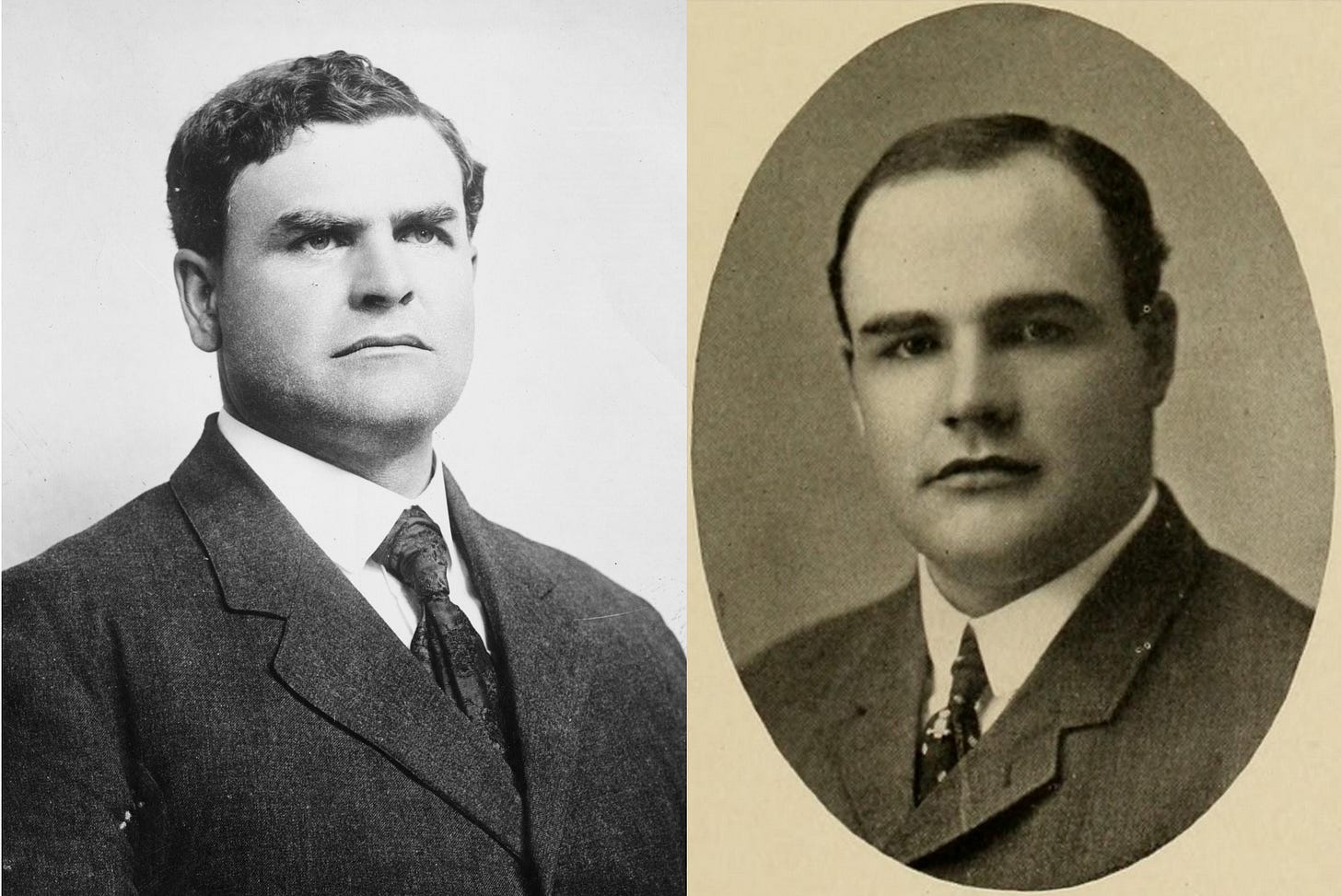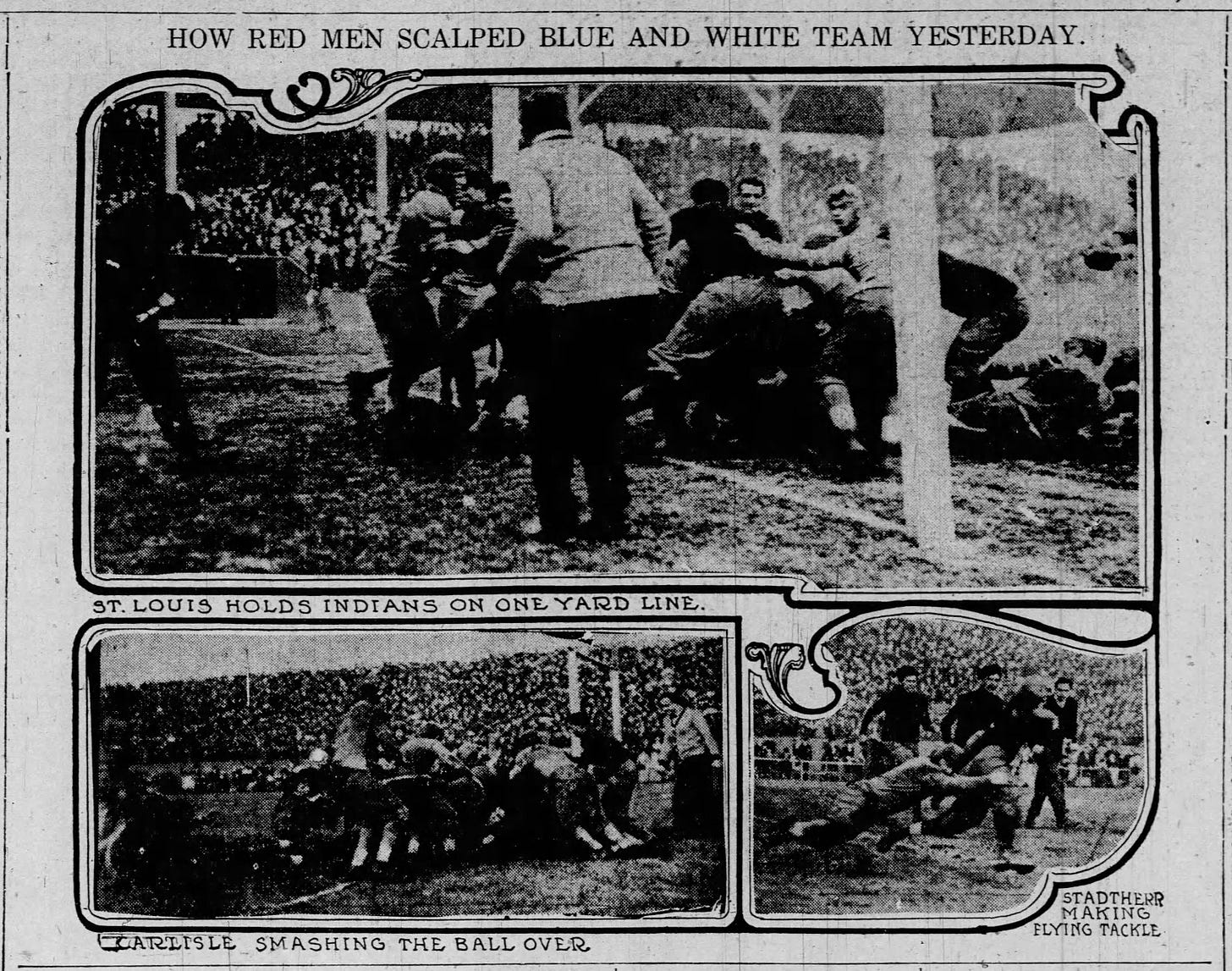Brothers Collide In The 1909 Carlisle-St. Louis Game
League Park, home of the St. Louis Cardinals until 1920, was the scene of brother-on-brother violence on Thanksgiving Day 1909. There were no punches thrown, the brothers had even been toasted together the day before by the Cornell Club of St. Louis, but the team from St. Louis University, coached by Bill Warner, was no match for the Carlisle Indians, led by Bill's older brother, Glenn "Pop" Warner.
It was the second and last time the brothers manned opposite sidelines in a game. Both had been All-Americans in their Cornell playing days, though Bill was ten years junior to Pop. Glen bounced around a bit before spending 18 years coaching either Cornell or Carlisle, and was in his fifteenth year on the sidelines in 1909. Bill moved around as well, allowing the two to face one another when Bill coached Colgate in 1906 and Glenn was at Cornell. In the first game of the first year with the legal forward pass, Cornell threw the ball successfully while Colgate played old-time smashmouth ball to earn a 0-0 tie.
By 1909, Pop was in his fourth year at Carlisle and had established his team as being among the foremost forward passers of the era, though they could run the ball on almost anyone. When he took over in 1909, Bill Warner did not retain the high-frequency passing St. Louis had shown under their previous coach, Eddie Cochems.
Carlisle entered the final game of the season sporting a 7-3-1 record, having beaten Syracuse, tied Penn State, and lost to Pitt, Penn, and Brown. St. Louis was 2-4, having lost to Missouri Mines, Drury, Indiana, and Oklahoma. Their victory over Wabash likely topped the season.
After arriving in St. Louis on Wednesday, Pop rushed off for the banquet with the Cornell alums, feeling confident that he would beat his brother for the second time the next day.
The game did not begin as Pop wished it might as Carlisle fumbled the opening kick inside the 10-yard line and fumbled again on the first play from scrimmage, allowing St. Louis to recover it. The 12,000 Turkey Days fans waved their blue and white pennants in support of their boys, but Carlisle held firm and did not allow St. Louis to score. Whatever confidence St. Louis brought into the game seemed to vanish, and with it, their offense and defense.
St. Louis appeared helpless the rest of the game. Carlisle dominated the first half with straight football, pounding away at St. Louis' line for gain after gain, running outside for significant gains on occasion, and took a 17-0 halftime lead.
As much to amuse themselves and the crowd, Carlisle began throwing the ball in the second half, completing all but one pass, and stretching the score to 32-0, where the game ended.
There seemed to be three Indians to stop every white man and one white man to stop three Indians when Carlisle and St. Louis University battled on the gridiron at League Park Thursday afternoon. The sparkling play of the Redskins was startling. The helplessness of the local men was lamentable. Even the score of 32 to 0 in favor of Carlisle didn't tell the difference and strength between the two teams.
Crusinberry, James, 'St. Louis Far From Class of Crafty Indians,' St. Louis Post-Dispatch, November 26, 1909.
Bill Warner coached Oregon the next two years before putting his law degree to use practicing in the Northwest. His football days were essentially over after his Oregon stint, though he regularly scouted for his brother once Pop moved from Carlisle to Pitt and then landed at Stanford in the mid-1920s. Pop, who was also a lawyer, concentrated on football and did just fine for himself following that route.
Football Archaeology is reader-supported. Click here to donate a couple of bucks, buy one of my books, or otherwise support the site.




Another excellent story on football history. However, while this game did take place at League Park, the St. Louis Browns played at Sportsman's Park from 1902 to 1953. The Cardinals played at League Park until 1920; after which they moved over and shared Sportsman's Park with the Browns.